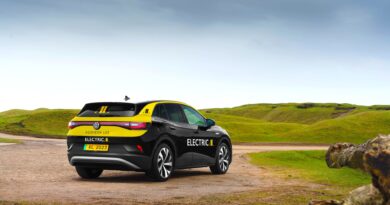General Motors secures new lithium supply for next generation EVs
General Motors has partnered with Controlled Thermal Resources to sustainably extract lithium from the coast of California for the production of its electric vehicles.
Controlled Thermal Resources (CTR) provides lithium products and renewable energy with projects in advanced development in the United States. The collaboration with GM will supply the manufacturer with sustainably produced lithium from the company’s Hell’s Kitchen Lithium and Power development, located in the Salton Sea Geothermal Field in Imperial, California.
GM had previously announced that a significant portion of its future battery-grade lithium hydroxide and carbonate could come from CTR’s Hell’s Kitchen development, allowing GM to make more affordable, higher mileage electric vehicles with domestic, responsibly sourced lithium materials.
As an anticipated part of its $35 billion global commitment to EVs and autonomous vehicles, GM will be the first company to make a multi-million-dollar investment in CTR’s Hell’s Kitchen project. As the first investor, GM will have first rights on lithium produced by the first stage of the Hell’s Kitchen project, including an option for a multi-year relationship.
Controlled Thermal Resources expects to commence delivery of lithium from its first stage facilities in 2024.
Doug Parks, GM executive vice president of global product development, purchasing and supply chain, said: “Lithium is critical to battery production today and will only become more important as consumer adoption of EVs increases, and we accelerate towards our all-electric future.
“By securing and localizing the lithium supply chain in the U.S., we’re helping ensure our ability to make powerful, affordable, high mileage EVs while also helping to mitigate environmental impact and bring more low-cost lithium to the market as a whole. GM looks forward to working with CTR, in addition to state and local leaders, in achieving these goals.”
Lithium is a key battery material used in the cathodes and electrolytes of GM EVs like the Chevrolet Bolt EV and Bolt EUV. Lithium will become even more important in battery use as GM explores lithium metal batteries with a protected anode. Most lithium used in lithium-ion batteries is currently mined and processed outside of the U.S.
CTR’s lithium resource at the Salton Sea in California is one of the largest known lithium brine resources in North America. Its closed-loop, direct lithium extraction process utilises renewable power and steam – significantly reducing the time to produce battery-grade lithium products and eliminating the need for overseas processing. CTR claims its operations will have a minimal physical footprint and a near-zero carbon footprint, with the brine, which comes after lithium extraction, returned to the geothermal reservoir deep within the earth.
According to CTR, the integration of direct lithium extraction with renewable geothermal energy offers the highest sustainability credentials available today.
Rod Colwell, CTR’s chief executive officer, said: “We are very pleased to establish this strategic relationship with GM moving forward. GM has shown great initiative and a real forward-thinking strategy by securing and localizing a lithium supply chain while also considering the most effective methods to minimize environmental impacts.
“Worldwide growth in electric vehicle adoption has highlighted the critical need to develop a strong and secure battery supply chain in the United States. CTR is fully committed to developing its significant lithium resource in response to this, and we look forward to collaborating with GM as we continue to accelerate these efforts.”






